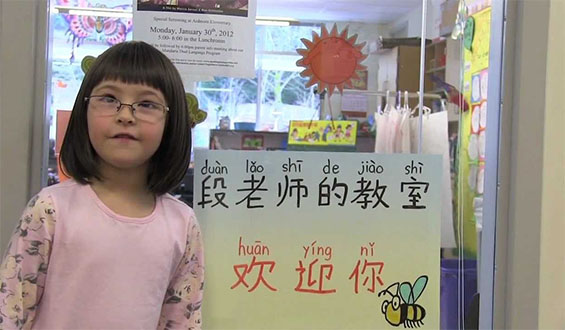
Dual immersion programs are becoming increasingly popular in schools across the United States as more educators begin to feel that becoming competitive in the global community could be bring benefits to today’s students.
The Alhambra Unified School District (AUSD) in California has been considering various ways to help their students prepare for 21st-century job requirements. The district is planning to introduce a Dual Immersion Program this fall as its most recent initiative to help students prepare for future careers that they believe could take them across the globe.
Jim Schofield, program director in the district, called the efforts critical for future job success as the United States continues to do business with other countries, adding that an employee who can speak, read, and write in another language is valued strongly by companies.
Schofield said that while most of the world is currently bilingual, only 17% of US citizens are able to speak another language. Meanwhile, 56% of Europeans and 36% of British citizens can speak at least two languages.
He adds that learning another language can also help to protect against dementia and Alzheimer’s. Citing a 2012 study conducted by the University of California, San Diego, he said that of the 44% of elderly participants who could speak both English and Spanish, those who could do so more fluently were less likely experience early onset of this type of disease.
Dr. Gary Gonzales, assistant superintendent for AUSD, said that plans for the program began two and a half years ago. Research performed by the district shows that students capable of speaking two or even three languages develop higher levels of thinking, listening, speaking, reading, and writing abilities from kindergarten all the way through high school.
In Chicago, Community Unit School District 308 board members have approved changes for the dual immersion program there, which has been the center of controversy. The program will receive changes to instruction as well as a change to a rule that gave preference to siblings of students already enrolled.
Board members had previously voted to end the program in 2015. However, after an election resulted in new board members being instated, an updated vote allowed the program to stay, reports Sarah Freishtat for The Chicago Tribune.
A number of board members said they felt the program was not doing enough to help Spanish-speaking students learn English, and that a new program should be created. Parents shot back, arguing that doing so would disrupt their child’s education. Others said that while they agreed with the idea of bilingualism, they felt too much money was being put into a program that helped very few students.
Parents also argued that more languages should be offered through the program. They also felt the lottery entry system made the program too difficult to get into, as were the rules offering preference to children with siblings already enrolled.
Recommendations included keeping the sibling rule for kindergartners and first graders, which would offer automatic entry to these students that already have a sibling enrolled. Other recommendations include an expansion of the program, which would require an additional two or three full-time staff members, as well as ensuring that classes are made up of half English-speaking and half Spanish-speaking students. If that is not possible, it is suggested that neither group account for more than two-thirds of the class.
Dual Language Programs Grow In Nod to Global Economy
0
Share.




